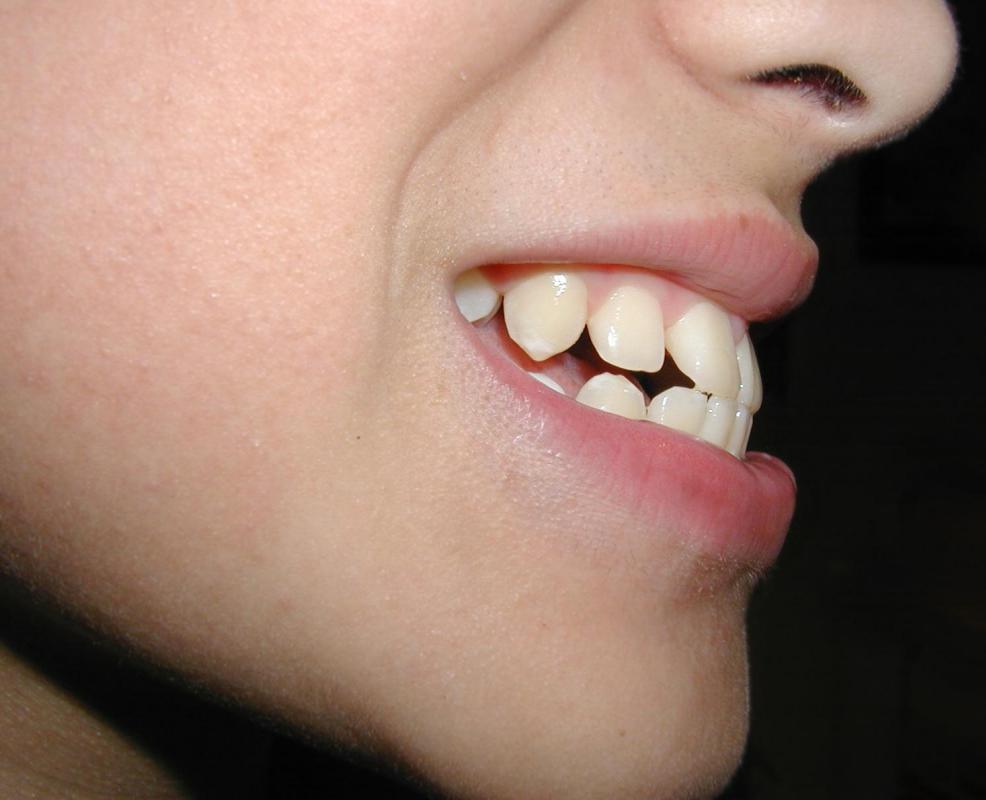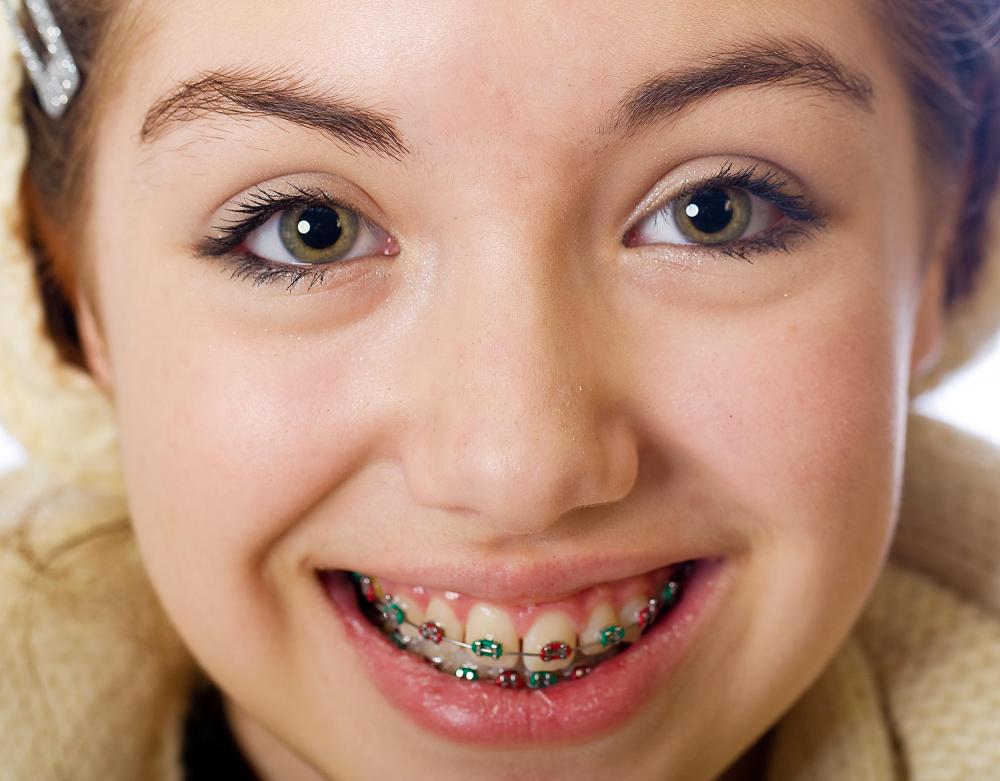At WiseGEEK, we're committed to delivering accurate, trustworthy information. Our expert-authored content is rigorously fact-checked and sourced from credible authorities. Discover how we uphold the highest standards in providing you with reliable knowledge.
What is Orthodontic Headgear?
Orthodontic headgear is a tool used by orthodontists to fix problems with a patient's bite. Most often, this orthodontic appliance works to correct a severe overbite or underbite, but it can also help to create additional space for adult teeth to grow. The orthodontist uses tiny hooks to attach the headgear to dental braces, and the resulting forces and pressures do the work of readjusting the bite.
There are several types of orthodontic headgear. Some of the most common are the facebow, J-hook, and cervical pull. The facebow includes straps that fit behind the neck or head which are attached to braces on the back teeth. The J-hook is similar, but uses two hooks with loops on their ends to attach to the braces.

The third type, the cervical pull, is a kind of reverse-pull headgear, also known as a Delaire facemask. It has two pads — one rests on the forehead and the other on the chin — connected together by a vertical wire. A second wire runs from the vertical wire to the braces. Instead of pulling back, like the facebow and J hook, this model pulls forward.

In order to be effective, orthodontic headgear must be worn over long periods of time. Most often, orthodontists will determine that the appliance must be worn between 12 and 16 hours a day, although, in some cases, 24 hours may be needed. Usually, it is worn over a period of 6 to 18 months.
Most often, those who need headgear are young people who are still growing, including children and teenagers. Orthodontists use the appliance to help gradually move the jaw or teeth to their proper positions. Adults sometimes need headgear too, however. After teeth are extracted, a device can be used to close the space in between or to keep back teeth from moving forward.

Whatever the type, orthodontic headgear does not usually require much care. It needs to be kept clean, just as braces and teeth need daily hygiene. The device cannot be worn during running or playing sports, or during any kind of heavy physical activity. Even grabbing or pulling can cause damage or change the way the appliance is working.
Orthodontic headgear has been in use for hundreds of years, through for varying purposes. It is used less often today than it once was. In combination with other dental equipment, it is effective, but it is sometimes uncomfortable or even painful, and is not considered attractive. Orthodontics has progressed to the point where other methods can often be used to improve all but the worst situations.
AS FEATURED ON:
AS FEATURED ON:













Discuss this Article
Post your comments